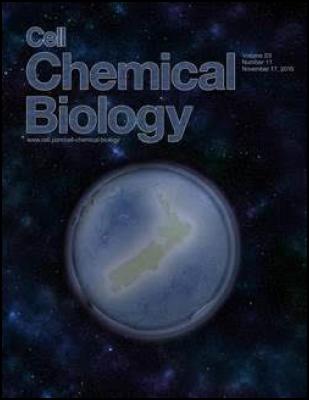Putting New Zealand on the front page
21 November 2016
Putting New Zealand on the front page

Victoria University of Wellington scientists have featured on the cover of a leading international journal with an image of bacteria grown in the shape of New Zealand.
Research by Dr Jeremy Owen, Dr Mark Calcott, Dr Katherine Robins and Associate Professor David Ackerley from Victoria’s School of Biological Sciences, published in Cell Chemical Biology,investigates the potential of engineering improved antibiotics.
Dr Owen says antibiotic resistance is a serious problem that is steadily getting worse.
“We’re faced with going back to the 1920s pre-antibiotic era where the most innocuous of wounds could potentially kill you if they became infected. This is something that everybody is going to be vulnerable to.”
The research outlines the possible re-engineering of the enzymatic assembly lines that make antibiotics.
“By re-engineering assembly lines we could get them to make interesting derivatives that can get around bacterial resistance mechanisms,” says Associate Professor Ackerley.
“The standard approach is to take apart and re-assemble the modules that make up the assembly lines. Nature has achieved this millions of times, but it doesn't generally work well in the lab.
“We took the same starting approach, but then added an additional step of mimicking evolution by introducing millions of small mutations and selecting the assembly lines that now worked best.”
Dr Robins says the research team looked for any hint of activity when making the mutations.
“If there’s activity, which may only be one time in a thousand times, it can be enough for evolution to start some selective pressure, so it evolves to make more and more.
“We modelled this using two enzymatic systems that each produce a different brightly coloured product. This allowed us to visually track improvements in our evolved and re-engineered enzymes.”
The changes in colour inspired Dr Calcott to construct bacteria in the shape of New Zealand in a petri dish.
“Our two different enzymatic systems were in two different bacteria, and one makes a blue pigment while the other makes a yellow-green pigment,” says Dr Calcott.
“I grew the green bacteria in the shape of New Zealand, sitting in an ocean of the blue bacteria, which Cell Chemical Biology decided to use for its November cover page. It’s pretty exciting to make the cover of such a good journal.”
ends


 Plains Media: Plains FM Announces Name Change After 37 Years
Plains Media: Plains FM Announces Name Change After 37 Years NIWA: Flooding From Underneath - New Tool Reveals Shallow Groundwater Elevations
NIWA: Flooding From Underneath - New Tool Reveals Shallow Groundwater Elevations Commerce Commission: Commission Concludes Auckland Airport Over-charging By $190 Million
Commerce Commission: Commission Concludes Auckland Airport Over-charging By $190 Million The Future Is Rail: Ferry Decision - Common Sense Prevails
The Future Is Rail: Ferry Decision - Common Sense Prevails Aotearoa Food Rescue Alliance: Grocery Market Reform Must Include Mandatory Food Rescue Partnerships
Aotearoa Food Rescue Alliance: Grocery Market Reform Must Include Mandatory Food Rescue Partnerships Hugh Grant: Zero Trust Security - A Buzzword Or The Ultimate Protection?
Hugh Grant: Zero Trust Security - A Buzzword Or The Ultimate Protection?



